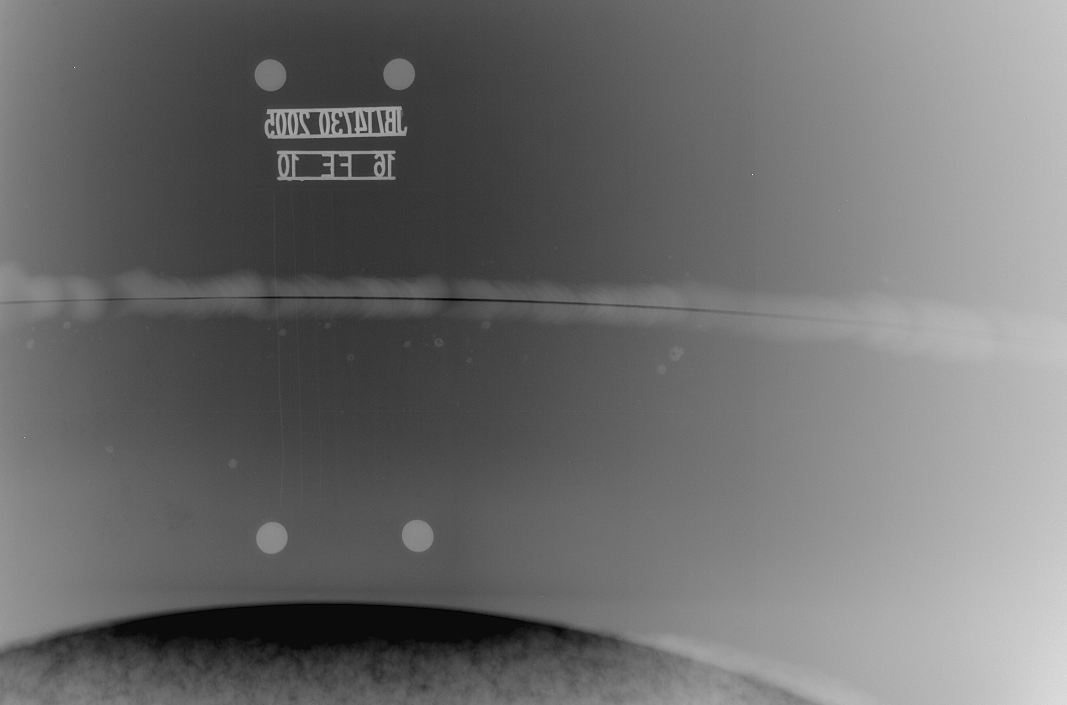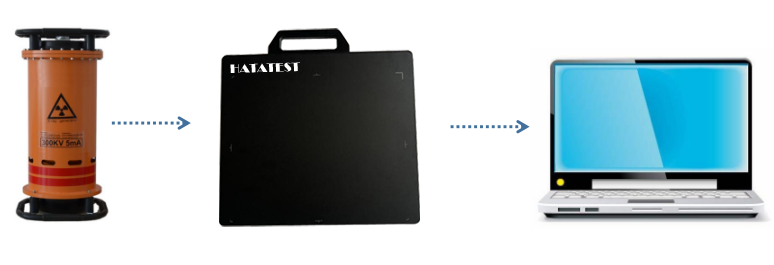
If there are defects such as pores, slag inclusions, and incomplete penetration in the weld zone, since the defect area penetrates more X-rays, and the relative amount of X-rays in the surrounding background area is relatively small, it is in the flaw detection image. The defect area will form a bright spot or a bright line. In this way, it can be visually determined whether the region is brighter than the surrounding background region according to whether the region is brighter than the surrounding background region, and from the perspective of image processing, the grayscale value of the pixel in the flaw detection image can be determined. To determine if an area is a defective area.
First, from the perspective of human vision, observe how defect detectors determine whether a region is a defective region. If an area is brighter than the surrounding background area, the inspector will consider this area to be a defective area. As the difference in the brightness of the resistant area continues to increase, the inspector will consider this area to be a defective area. The area must be a defective area. Conversely, if an area is similar in brightness to the surrounding background area, the inspector will consider the area to be not a defective area but a background area. One problem that should be noted here is that the “brightness generation or “brightness” in human vision refers not only to the grayscale average of the pixels in the region, but also to the spatial variance characteristics of the pixels in the region (pixels within a certain region) The intensity of the gray value changes is related. That is to say, it is not enough to have a high gray level average, or it is not enough to make the defect inspector believe that this area is the defect area. For a special case, if a region There are several points with very large gray values (actually a few vicious random noises), they still make the gray level average of the whole area higher, but this area is not a defect, and it looks no better than its surroundings. The background area is "bright" because this area is only a background area containing several vicious random noises, not a defective area. Therefore, "brightness" in human vision means that in addition to having a high spatial contrast (ie, grayscale) In addition to the average, it is also necessary to have a lower spatial variance characteristic, that is, it seems to be "bright" to be "even".
In the X-ray inspection image, when the defect area and the noise area exhibit the same spatial contrast characteristics (the average gray value of the area is the same), the variance characteristic of the defect area is obviously lower than the spatial variance characteristic of the noise area (the gray scale of the area) The degree of change of the value is small); and when the defect area and the noise area exhibit the same spatial variance characteristics, the spatial contrast of the defect area is inevitably higher than the spatial contrast of the noise area. Therefore, in the fuzzy defect detection algorithm used in this paper, for a region with the same spatial contrast characteristics, the smaller the spatial variance characteristic, the more reason to believe that this region is a defective region, and the value of the fuzzy membership degree is higher. High, and vice versa; for regions with the same spatial variance characteristics, the lower the spatial contrast characteristic, the less likely this region is to be defective, and the lower the value of fuzzy membership is. The higher, this is the basic principle of the fuzzy defect detection algorithm, and the fuzzy rules used in the fuzzy defect detection algorithm are formed based on this.
-
 Sales@hata-ndt.com
Sales@hata-ndt.com -
 +86 371 63217179
+86 371 63217179










